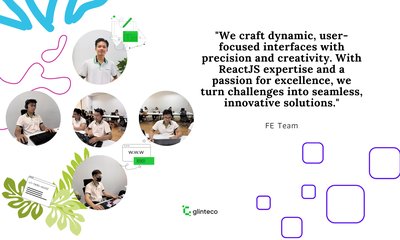Best Frameworks for Custom Web Application Development in 2025
By JoeVu, at: Nov. 5, 2025, 6:02 p.m.
Estimated Reading Time: __READING_TIME__ minutes


In the rapidly changing tech world, picking the correct framework isn’t just a technical decision - it’s actually strategic. It can affect time-to-market, maintainability, scalability, performance, and even costs. As more businesses push for robust, secure, and real-time web applications, frameworks are evolving fast. This post combines insights from multiple sources to help you know which frameworks shine in 2025, what to watch out for, and how to pick one aligned with your goals.
Why Framework Choice Is More Important than Ever
-
Performance: Users expect blazing-fast apps with smooth interactivity
-
Security & compliance: Regulations like GDPR and HIPAA require frameworks with secure defaults
-
Scale & complexity: Applications are increasingly real-time, microservice-driven, and AI-powered
-
Ecosystem & talent pool: A mature ecosystem and available developers reduce risk
-
Long-term costs: The wrong framework may force expensive rewrites down the line
Top Frameworks to Consider in 2025
| Framework | Language | Strengths | Watch-Outs | Best Use Cases |
|---|---|---|---|---|
| Next.js | JS/React | SEO, edge rendering, SSR/SSG, global performance | Learning curve on server/client split | SaaS, marketplaces, hybrid apps |
| Remix | JS/React | Progressive enhancement, nested routing, fast forms | Smaller ecosystem vs Next.js | CRUD-heavy apps |
| NestJS | Node.js/TS | Enterprise structure, DI, GraphQL, microservices | More setup vs Express | APIs, large-scale backends |
| Express.js | Node.js | Lightweight, flexible, huge ecosystem | Manual setup for security & structure | Small services, API gateways |
| Django | Python | Secure, batteries-included, compliance-ready | Heavy for microservices | Dashboards, enterprise apps |
| FastAPI | Python | Async, fast, auto docs, ML/AI friendly | Smaller ecosystem vs Django | AI/ML backends, data-driven APIs |
| Laravel | PHP | Clean syntax, robust ecosystem, rapid dev | PHP reputation, may lag in modern UX | SME apps, e-commerce |
| Ruby on Rails | Ruby | Convention over configuration, rich ecosystem | Perceptions of scaling issues | SaaS, MVPs, fast-to-market apps |
| Phoenix | Elixir | Concurrency, real-time with LiveView | Smaller developer pool | Chats, collaboration tools |
| Spring Boot | Java | Enterprise-grade, microservices, observability | Verbose, heavy for startups | Enterprise backends, finance/health |
| ASP.NET Core | .NET | High performance, strong tooling, secure | Mostly enterprise adoption | Microsoft ecosystem apps |
| Vue/Nuxt | JS | Flexible, SSR/SSG via Nuxt, approachable | Smaller enterprise adoption vs React | Content sites, progressive apps |
| Svelte/SvelteKit | JS | Minimal, reactive, small bundle size | Smaller ecosystem | Performance-critical UIs |
Frameworks by Use Case
-
SaaS & Marketplaces → Next.js + Prisma + PostgreSQL
-
Enterprise APIs → NestJS or Spring Boot
-
Data Dashboards → Django + DRF
-
AI/ML Projects → FastAPI
-
Real-time Collaboration → Phoenix LiveView
-
SME Custom Apps → Laravel or Rails
Trends Shaping Web Development in 2025
-
TypeScript everywhere → Strong typing reduces bugs and improves collaboration
-
Edge-ready frameworks → Next.js and SvelteKit thrive in serverless & edge environments
-
Real-time by default → WebSockets, LiveView, and SSE becoming expected
-
AI/ML integration → FastAPI and Node.js frameworks embedding AI connectors
-
Security baked-in → Mature frameworks (Django, Rails, Laravel) focusing on compliance
-
Component-first UIs → Frameworks with strong component libraries speed up dev cycles
How to Pick the Right Framework
Ask yourself:
-
What’s the scale and expected growth of your app?
-
Do you need real-time features or just static/dynamic content?
-
What’s your team’s existing expertise?
-
Do you need strong SEO/SSR capabilities?
-
What’s your infrastructure environment (AWS, Azure, GCP)?
-
Are there compliance/security requirements?
-
Is your priority speed-to-market or long-term maintainability?
Conclusion
There’s no universal “best” framework in 2025. The choice depends on team expertise, project goals, compliance requirements, and scale.
-
Laravel, Rails → Still great for SMEs and startups
-
Phoenix, Spring Boot, ASP.NET Core → Enterprise and real-time heavyweights
-
Vue, Svelte → Emerging stars for lightweight, fast UIs.
Your smartest move is aligning framework choice with your business vision and technical roadmap.
Frequently Asked Questions (FAQ)
Q1. Which framework is best for startups in 2025?
For startups, speed-to-market matters most. Frameworks like Laravel, Ruby on Rails, or Next.js provide rapid development, strong ecosystems, and scalability as you grow.
Q2. Which framework should I use for AI/ML-powered apps?
FastAPI (Python) is ideal due to its async speed, automatic docs, and strong adoption in AI/ML backends. Django is also useful if you need compliance and admin features.
Q3. What framework is best for real-time applications like chat or collaboration tools?
Phoenix (Elixir) with LiveView excels at building real-time, fault-tolerant apps without heavy front-end JavaScript. Node.js with Socket.io is another option.
Q4. Which frameworks are most enterprise-ready?
Spring Boot (Java) and ASP.NET Core (.NET) remain the most robust for enterprises, especially with strict compliance and security needs. NestJS is a modern JS alternative.
Q5. Do I need to use TypeScript for modern frameworks?
Not mandatory, but strongly recommended. TypeScript adoption across frameworks (NestJS, Next.js, Remix) ensures fewer runtime errors and smoother collaboration.
Q6. Which framework is future-proof in 2025?
There’s no “one-size-fits-all,” but frameworks with large communities and strong ecosystems, Next.js, Django, Laravel, Spring Boot, are safer bets for long-term use.





